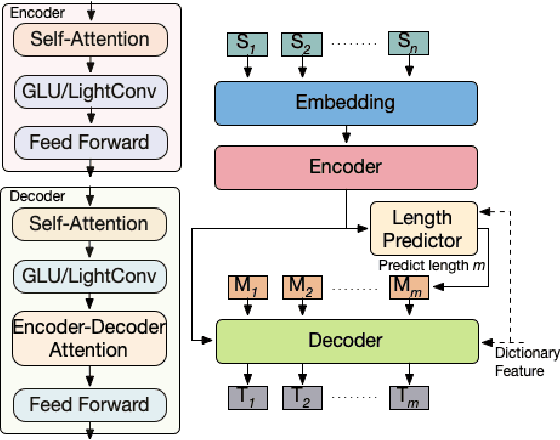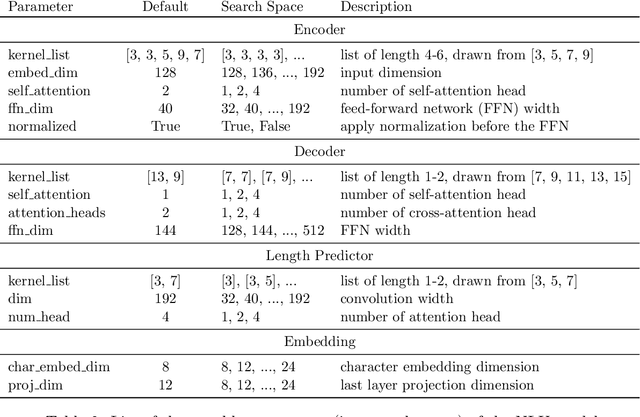Pierce I-Jen Chuang
Latency-Aware Neural Architecture Search with Multi-Objective Bayesian Optimization
Jun 25, 2021



Abstract:When tuning the architecture and hyperparameters of large machine learning models for on-device deployment, it is desirable to understand the optimal trade-offs between on-device latency and model accuracy. In this work, we leverage recent methodological advances in Bayesian optimization over high-dimensional search spaces and multi-objective Bayesian optimization to efficiently explore these trade-offs for a production-scale on-device natural language understanding model at Facebook.
One Weight Bitwidth to Rule Them All
Aug 28, 2020



Abstract:Weight quantization for deep ConvNets has shown promising results for applications such as image classification and semantic segmentation and is especially important for applications where memory storage is limited. However, when aiming for quantization without accuracy degradation, different tasks may end up with different bitwidths. This creates complexity for software and hardware support and the complexity accumulates when one considers mixed-precision quantization, in which case each layer's weights use a different bitwidth. Our key insight is that optimizing for the least bitwidth subject to no accuracy degradation is not necessarily an optimal strategy. This is because one cannot decide optimality between two bitwidths if one has a smaller model size while the other has better accuracy. In this work, we take the first step to understand if some weight bitwidth is better than others by aligning all to the same model size using a width-multiplier. Under this setting, somewhat surprisingly, we show that using a single bitwidth for the whole network can achieve better accuracy compared to mixed-precision quantization targeting zero accuracy degradation when both have the same model size. In particular, our results suggest that when the number of channels becomes a target hyperparameter, a single weight bitwidth throughout the network shows superior results for model compression.
Bridging the Accuracy Gap for 2-bit Quantized Neural Networks
Jul 17, 2018



Abstract:Deep learning algorithms achieve high classification accuracy at the expense of significant computation cost. In order to reduce this cost, several quantization schemes have gained attention recently with some focusing on weight quantization, and others focusing on quantizing activations. This paper proposes novel techniques that target weight and activation quantizations separately resulting in an overall quantized neural network (QNN). The activation quantization technique, PArameterized Clipping acTivation (PACT), uses an activation clipping parameter $\alpha$ that is optimized during training to find the right quantization scale. The weight quantization scheme, statistics-aware weight binning (SAWB), finds the optimal scaling factor that minimizes the quantization error based on the statistical characteristics of the distribution of weights without the need for an exhaustive search. The combination of PACT and SAWB results in a 2-bit QNN that achieves state-of-the-art classification accuracy (comparable to full precision networks) across a range of popular models and datasets.
PACT: Parameterized Clipping Activation for Quantized Neural Networks
Jul 17, 2018



Abstract:Deep learning algorithms achieve high classification accuracy at the expense of significant computation cost. To address this cost, a number of quantization schemes have been proposed - but most of these techniques focused on quantizing weights, which are relatively smaller in size compared to activations. This paper proposes a novel quantization scheme for activations during training - that enables neural networks to work well with ultra low precision weights and activations without any significant accuracy degradation. This technique, PArameterized Clipping acTivation (PACT), uses an activation clipping parameter $\alpha$ that is optimized during training to find the right quantization scale. PACT allows quantizing activations to arbitrary bit precisions, while achieving much better accuracy relative to published state-of-the-art quantization schemes. We show, for the first time, that both weights and activations can be quantized to 4-bits of precision while still achieving accuracy comparable to full precision networks across a range of popular models and datasets. We also show that exploiting these reduced-precision computational units in hardware can enable a super-linear improvement in inferencing performance due to a significant reduction in the area of accelerator compute engines coupled with the ability to retain the quantized model and activation data in on-chip memories.
 Add to Chrome
Add to Chrome Add to Firefox
Add to Firefox Add to Edge
Add to Edge